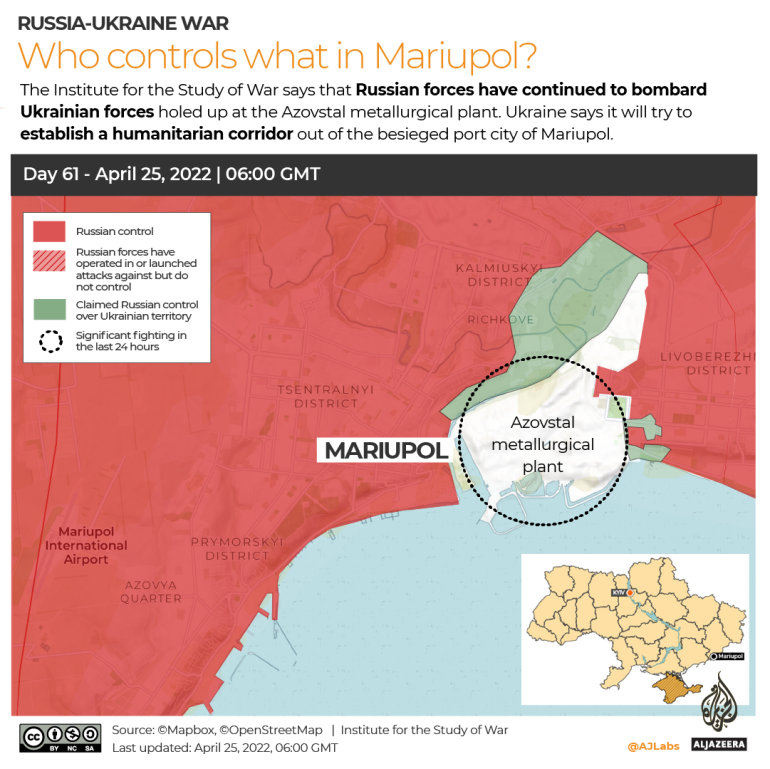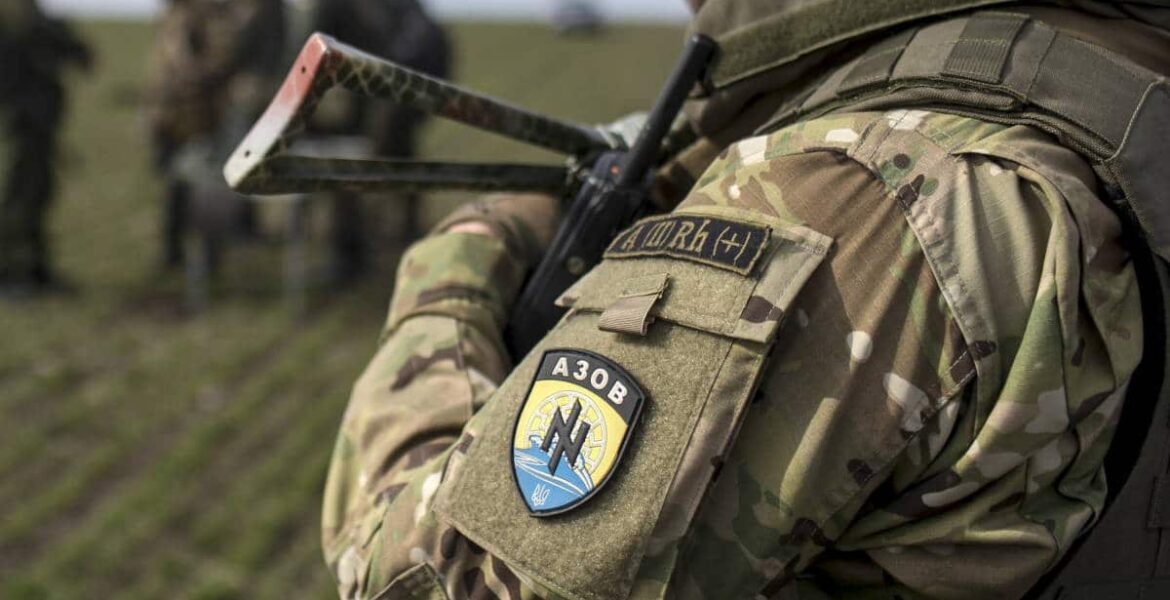Members of the Azov Battalion and the Ukrainian military trapped in the Azovstal plant in Mariupol have requested to be evacuated, according to Denis Pushilin, Head of the Russian-backed separatist Donetsk People's Republic since 2018.
Speaking on Soloviev Live, Pushilin said that the militants of the neo-Nazi Azov Battalion trapped in are asking for evacuation with their weapons to Turkey.
New footage of people purportedly sheltering at the Azovstal steel plant showed women saying they only had water and food to last a few more days.
Oleksiy Arestovych, adviser to Ukrainian President Volodymyr Zelensky, said Mariupol’s defences were “on the brink of collapse” and appealed to the Russians to hold talks at Azovstal.

“We invited Russians to hold a special round of talks on the spot, right next to the walls of Azovstal,” Arestovych said in an interview on a Russian former lawyer’s YouTube channel.
Russian President Vladimir Putin had ordered Russian forces not to assault the plant, but Ukrainians say the attacks continue unabated.
Mykhailo Podolyak, another presidential adviser, tweeted on Sunday that the Russian military was attacking the plant with heavy bombs and artillery while accumulating forces and equipment for a direct assault.
(2/2) RF should think about the remnants of its reputation. For this, 3 “Mariupol steps” are needed.
1. Announce a real Easter truce in Mariupol.
2. Immediate humanitarian corridor for civilians.
3. Agree to a “special round of negotiations” so that we take/exchange our military.— Михайло Подоляк (@Podolyak_M) April 24, 2022
Meanwhile, in a message posted on social media on Sunday, Sviatoslav Palamar – deputy commander of the far-right Azov Regiment, which is sheltering at the steel plant – said Russian forces continued to rain down fire on Azovstal.
“The enemy continues air strikes, artillery from the sea… enemy tanks continue to strike and infantry is trying to storm,” he said.
Mariupol, which the Kremlin claims to have “liberated”, is pivotal to Russia’s war plans to forge a land bridge to Russian-occupied Crimea – and possibly beyond, as far as Moldova.
More than 100,000 people – down from a pre-war population of about 430,000 – are believed to remain in Mariupol with scant food, water or heat.
Who are the Azov Battalion?
Azov Special Operations Detachment (Ukrainian: Окремий загін спеціального призначення «Азов»), or Azov Battalion, is a right-wing extremist and neo-Nazi unit of the National Guard of Ukraine, based in Mariupol, in the Azov Sea coastal region.
In 2014, the regiment gained notoriety after allegations emerged of torture and war crimes, as well as neo-Nazi sympathies and usage of associated symbols by the regiment itself, as seen in their logo featuring the Wolfsangel, one of the original symbols used by the 2nd SS Panzer Division Das Reich.
Representatives of the Azov Battalion say that the symbol is an abbreviation for the slogan Ідея Нації (Ukrainian for “National Idea”) and deny connection with Nazism.
In 2014, a spokesman for the regiment said around 10–20% of the unit were neo-Nazis.
In 2018, a provision in an appropriations bill passed by the U.S. Congress blocked military aid to Azov on the grounds of its white supremacist ideology; in 2015, a similar ban on aid to the group was overturned by the Congress.
Members of the regiment come from 22 countries and are of various backgrounds.
The unit’s first commander was far-right nationalist Andriy Biletsky, who led the neo-Nazi Social-National Assembly and Patriot of Ukraine.
In its early days, Azov was a special police company of the Ministry of Internal Affairs, led by Volodymyr Shpara, the leader of the Vasylkiv, Kyiv, branch of Patriot of Ukraine and Right Sector.
In 2018, the U.S. House of Representatives also passed a provision blocking any training of Azov members by American forces, citing its neo-Nazi connections.
The House had previously passed amendments banning support of Azov between 2014 and 2017, but due to pressure from The Pentagon, the amendments were quietly lifted.
This was protested by the Simon Wiesenthal Center which stated that lifting the ban highlighted the danger of Holocaust distortion in Ukraine.
Up to 120,000 Greeks live in Mariupol and its surrounding towns and villages, such as Sartana.
READ MORE: Who Is The Pontian Greek Fighting In Mariupol Against The Azov Battalion?

